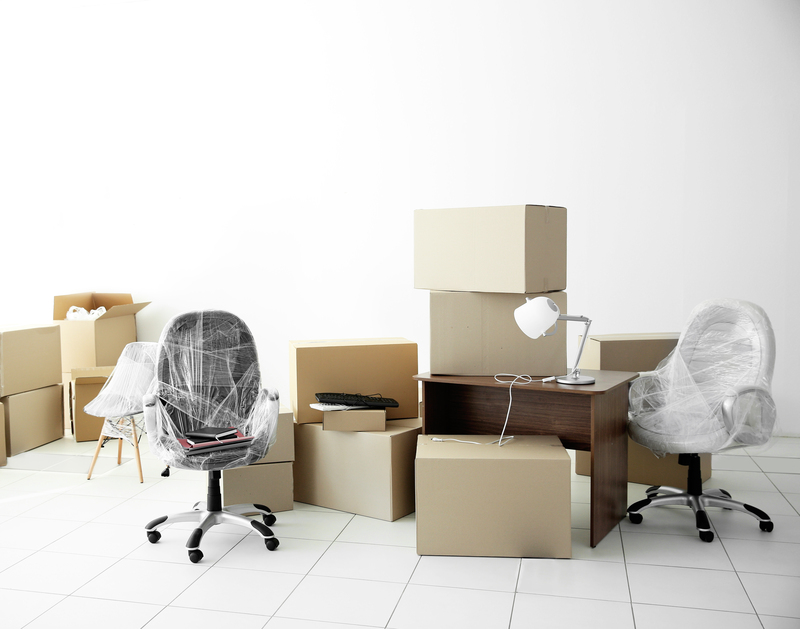Step by Step Packing Strategies for a Stress-Free House Move
Moving house can feel overwhelming, but with effective preparation and a proper packing plan, the process can be significantly less stressful and even enjoyable! In this comprehensive guide, we offer proven step by step packing strategies to ensure your next home move is as stress-free as possible. Whether you are relocating across town or across the country, these practical tips will help you stay organized, protect your belongings, and transition smoothly to your new home. Read on to discover actionable moving advice, must-know hacks, and a packing checklist every mover should have!

Why Planning is the Key to a Stress-Free Move
A well-organized packing strategy transforms a usually chaotic task into a manageable, even empowering experience. Careful planning not only saves time but also protects your prized possessions, eliminates last-minute panic, and allows you to settle into your new house faster. Let's examine how you can prepare for a smooth relocation.
1. Start Early and Create a Moving Timeline
One of the most important steps in any moving process is to start early. Give yourself at least 6-8 weeks to prepare if possible. The sooner you begin, the less likely you are to encounter unnecessary stress.
- Break the process into small, manageable tasks.
- Establish a timeline for each room or category of belongings.
- Assign deadlines leading up to your move-out day.
- Use digital tools or printable checklists to track your progress.
2. Declutter Before You Pack
Moving presents the perfect opportunity to declutter and only take what you truly need to your new home. Preparing a house for a move while decluttering makes packing easier--and your load lighter.
- Sort your items room by room.
- Designate items to keep, donate, sell, or discard.
- Arrange a garage sale or use online marketplaces for valuable items.
- Schedule pickups with local charities for donations.
Pro Tip: If you haven't used an item in over a year, consider parting ways with it!
Essential Supplies for a Seamless Packing Experience
Gathering the right packing materials upfront saves you multiple trips to the store and speeds up the packing process. Here's what you'll need:
- Sturdy moving boxes in assorted sizes
- Packing paper and bubble wrap for fragile items
- Quality packing tape and dispensers
- Permanent markers and color-coded labels
- Scissors and box cutters
- Stretch wrap and zip-top bags for small items
- Moving blankets for bulky furniture
- Trash bags (for both garbage and donations)
Keep your supplies centralized in a "packing station" so they're always within reach.
3. Pack Room by Room
Tackling one area at a time dramatically increases efficiency and reduces the risk of feeling scattered. This method also helps with unpacking!
- Focus on rooms least used first (guest rooms, storage areas).
- Label each box with its contents and destination room.
- Seal boxes as you complete each area to avoid mixing items.
4. Packing Strategies for Households: The Golden Rules
Heaviest Items on the Bottom, Lightest on Top
Whether packing books or kitchenware, always place heavier items at the box's base and lighter ones above. This prevents breakage and keeps boxes from becoming unmanageable.
Fill Gaps to Prevent Shifting
Use towels, clothing, or packing paper to fill empty spaces in boxes. This added cushioning ensures your items stay snug during transit.
Do Not Over-Pack Boxes
Keep box weight under 50 lbs (23 kg) so they're safe to carry and won't break during the move.
Wrap and Protect Breakables
Wrap fragile items like dishes, glasses, and electronics individually. Use bubble wrap and packing paper, and mark these boxes as "fragile" on all sides.
5. Use Specialty Boxes for Valuable and Fragile Items
- Wardrobe boxes for hanging clothes
- TV and picture boxes for electronics and mirrors
- Dish pack boxes with cell dividers for kitchenware
Investing in the right boxes saves you money and heartache by minimizing damages during your house move.
Labeling and Inventory: The Secret to Organized Unpacking
6. Use a Color Coded Labeling System
Assign a different color sticker or tape for each room in your new home. Mark the boxes accordingly. This makes unloading and directing movers infinitely easier.
- Write a brief list of contents on each box.
- Add "unpack first" to essentials you'll need the first night.
7. Create a Moving Inventory
Maintain a master list with the total number of boxes from each room. This ensures nothing gets lost in the shuffle and helps with insurance claims if accidents happen.
Packing Essentials Box: Your First 24 Hours in a New Home
8. Prepare an "Open-First" Box
Set aside one or two boxes or bags with everything you'll need immediately upon arrival. This eliminates frantic rummaging after a long day.
- Bedding and a change of clothes
- Toiletries and personal hygiene items
- Chargers and essential electronics
- Basic kitchen supplies (coffee, kettle, snacks, utensils)
- Important documents and valuables
- Medications and a small first aid kit
- Pet essentials (if applicable)
Having these items on hand creates a smooth and stress-free first night in your new house.
Moving Day Packing Strategies
9. Finish Packing Before Moving Day
Ideally, all your belongings should be packed and boxes sealed the night before. Only your essentials box and perishable food should be left out.
10. Keep Critical Documents and Valuables With You
Store passports, wills, jewelry, financial documents, and irreplaceable belongings in a personal bag or suitcase that you transport yourself. Do not send these with the movers.
11. Communicate With Movers or Helpers
Provide clear instructions on which boxes are fragile, which are "open-first," and which rooms each box goes into. Tape your color-coded floor plan to the door of each room at the new place for easy reference.
Unpacking: Settling into Your New House with Ease
12. Begin With Essentials
Start with your essentials box, then work on setting up your kitchen, bathroom, and bedrooms. This ensures basic comfort while you organize the rest of the house.
13. Unpack Room by Room
Just like packing, focus on one area at a time for efficiency and a sense of accomplishment.
- Dispose of packing materials as you go to declutter quickly.
- Check against your inventory list to make sure nothing is missing.
- Ask for help from family or friends to speed up the process.
Extra Tips for Stress-Free House Moving and Packing
Get Professional Help If Needed
If you're short on time or overwhelmed, hiring professional packers or a full-service moving company can deliver peace of mind. Many offer tailored services to fit your budget and timeline.
Stay Hydrated and Take Breaks
Moving day is physically and emotionally intense. Remember to eat, drink water, and rest. Encourage everyone helping to do the same.
Take Photos of Electronics
Before dismantling TVs, computers, or gaming consoles, snap photos of how cords are connected. This simple hack greatly reduces setup time and confusion at the new house.
Protect Floors and Walls
Use old sheets, blankets, or cardboard to cover floors and corners--this keeps both old and new homes in good condition.
Change Your Address in Advance
- Update postal address for mail forwarding.
- Notify banks, insurers, and subscriptions.
- Arrange for utility transfers at least a week before moving.

Frequently Asked Questions: Packing and Moving House
How early should I start packing for a house move?
Begin packing non-essential items 6-8 weeks before your move. The earlier you start, the less pressure you'll feel as your move-out date approaches.
What items should I leave until the last minute?
Pack daily essentials such as toiletries, vital documents, kitchen basics, and a few changes of clothing last. Place these in your "essentials" or "open-first" box.
How can I make unpacking faster and more organized?
- Clearly label each box by room and contents.
- Unpack essentials first, then move room by room.
- Dispose of packing supplies immediately to keep spaces clear.
Should I hire professional packers and movers?
If budget allows, professionals can save immense time and reduce stress--especially for large, busy households or long-distance relocations. Obtain quotes several weeks ahead to secure your chosen service.
Conclusion: Your Blueprint for a Smooth, Stress-Free House Move
Relocating doesn't have to be an ordeal! By following these step by step packing strategies for a stress-free house move, you can approach your moving day with confidence. Remember: plan ahead, declutter, use quality supplies, and label everything. Leave time to rest, ask for help, and look forward to the new beginnings that your fresh home will offer. Happy moving!
Ready to make your upcoming house move stress-free? Bookmark this guide and start today! For more tips on efficient packing and successful moving, subscribe to our newsletter or share your own moving experiences in the comments below.



